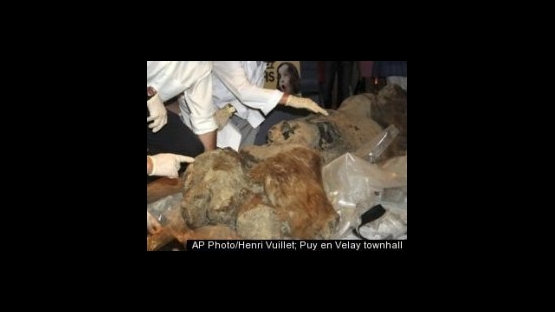The preservation of cultural heritage artefacts using irradiation is a little known but highly effective application of nuclear technology. Irradiation can be used to treat and preserve delicate historical objects by clearing them of contaminants such as insects, fungi and bacteria. In 2010, a 50,000-year-old baby mammoth, named ‘Khroma’ after the Siberian river where it was found by a hunter in 2008, underwent irradiation treatment at a nuclear institute in France, ARC-Nucléart laboratory, to clear it of bacteria that had contaminated this prehistoric specimen.
Mr Quoc-Khoi Tran, ARC-Nucléart’s senior expert in the field of gamma irradiation, works with the IAEA to build irradiation preservation capacities in Member States. “I’m committed to promoting and developing the irradiation process worldwide and this could only be possible through the strong support of the IAEA,” he says.
According to IAEA radiation specialist Ms Maria Helena Sampa, many cultural heritage objects such as books, paintings or even musical instruments are not stored in the right conditions. They may become infected with biological contaminants that can destroy them and that may also present hazards to the experts working closely with them.
Gamma irradiation is used to kill contaminants and bacteria that may infest old artefacts, without altering or damaging the original composition of the artefact. This radiation technique offers the most delicate and reliable method of disinfecting old or fragile cultural heritage materials; it helps to conserve them and paves the way for restoration.
In comparison to standard chemical procedures, irradiation has the advantage of being able to treat a whole specimen through its packaging. The object is not physically touched, and no chemicals are used, so there are no toxic residues, and hence no risks for curators, visitors or the environment. In addition, complex and delicate items can be treated quickly, reliably and at a low cost.
The IAEA technical cooperation project ‘Using Nuclear Techniques for the Characterization and Preservation of Cultural Heritage Artefacts in the European Region, encourages the use of environmentally friendly and risk free disinfestation procedures like irradiation, making an important contribution to environmental protection. The project also aims to provide greater access to advanced facilities that may not always be available within a particular country, encouraging cooperation and creating synergies. The IAEA contributes to the project through networking and technology promotion. “Under this regional technical cooperation project we facilitate the enhancement and transfer of technical knowledge and skills to characterize and preserve cultural heritage artefacts using the most ideal technology for the purpose with minimal costs”, says Alessia Rodriguez y Baena, Programme Management Officer, TC Europe.
From Mammoths to Musical Instruments: Preserving the Past Using Nuclear Technology
11 Jul 2011
Related resources
More
Last update: 26 Jul 2017


